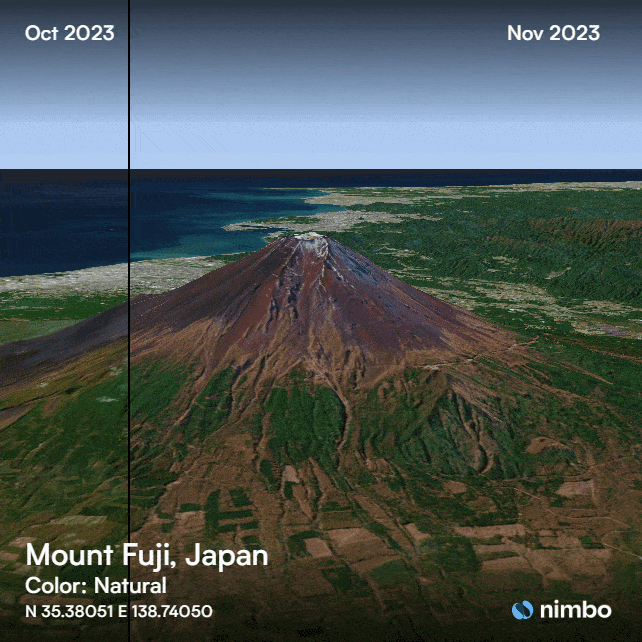
Mount Fuji hit by global warming
Satellite 3D view of Mount Fuji
Honchu island in Japan is famous for its change of colors come autumn as reds, yellows and browns sneak into the trees’ foliage to wash away summer greens. Amazingly beautiful on the ground, this new finery turns out to be as impressive when seen from above. In just a month’s time, the transformations of world-famous Mount Fuji and its surroundings is simply stunning. And alarming.
Mount Fuji’s no-snow fall
Japan’s iconic volcano and tallest mountain at 3,776 meters is more often than not depicted or photographed with its snow cover on. Of course, Mount Fuji’s white garment is only visible for about five months of the year. Yet there should have been more snow up there in November. This absence is due to an unprecedented warm fall bringing unseasonably high temperatures over Japan. The phenomenon has been caused both by this year’s El Nino effect over the Pacific Ocean and by climate change, and could be more frequent in the years to come, experts say.
Climate threat on Mount Fuji
Beyond this remarkable event, longer-term observations and analysis on top of Mount Fuji point to an ecosystemic alteration in the making. A 2020 study indeed evidenced a 2-degree rise in summer temperatures near the mountain’s peak over the past four decades. This warming effect, combined with an increase in CO2 concentration, is thought to have caused the tree line to climb an impressive 30 meters up slope, gradually transforming Mount Fuji’s barren landscape in its highest parts, and threatening its ecosystems.
Nimbo Earth Online with modified Copernicus Sentinel data (2022-2023)

